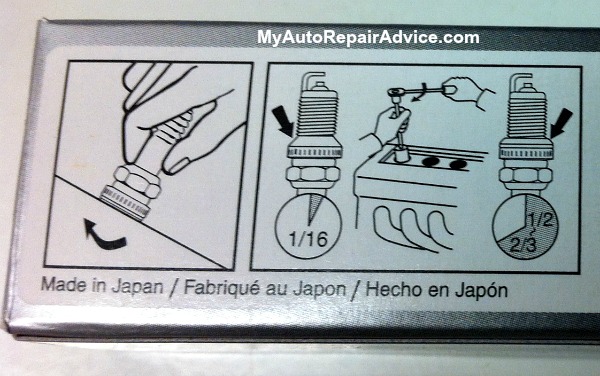Car Spark Plug Replacement
Car spark plug replacement is another one of those auto repair DIY jobs that used to be super simple, but now has gotten more complicated. Many of today’s cars have aluminum cylinder heads, coil on plug ignition systems and sometimes very hard to reach spark plugs. This does not, however, mean that this job is no longer possible for the novice mechanic. You just need a little more information first.
Should You Replace Spark Plugs Yourself?
DIY spark plug replacement is actually a pretty easy job that most people can do themselves. Keep in mind though that there are some cars that have the spark plugs in VERY hard to reach places.
The good news is that most newer cars (built after 2000) have spark plugs that are pretty easy to get to. Be sure to check your owners manual or service manual first so you know what you are getting into. After you do that there are just a few things that are absolutely essential to remember.
To troubleshoot, repair and maintain your vehicle, you’ll need diagnostic and repair information that is specific to your car or truck. For this I personally use and recommend ALLDATAdiy. With full manuals for over 30,000 vehicles online, you will find an exact match for your vehicle’s year, make and model.
Besides being cheaper than a factory manual, they also offer step by step repair instructions and detailed diagrams beyond what is found in most printed manuals. Click here for a sample of their diagnostic and repair information.
How to Replace a Spark Plug in a Car
1. Wait for Your Car Engine to Cool Down
Finding a spark plug that fits your vehicle is simple. What I do is go to the spark plugs page on Amazon and enter my vehicle year, make and model into their “filter by vehicle” search.
If you skip this step, you might find it impossible to remove the spark plugs from your engine without ruining the threads. This is especially true for aluminium cylinder heads. While it is possible to repair a misthreaded spark plug hole, but it is difficult and should be left to a professional.
2. Blow Out Debris Around Spark Plugs
Blow off any dust, dirt or debris around and near the spark plug with a compressed air duster. The last thing you’ll want is foreign particles falling DIRECTLY into your engine and possibly causing premature engine wear.
3. Make Sure Spark Plugs are Screwed in Straight
If spark plugs go in crooked, they can cross thread and you will have a problem. To make sure my spark plugs are screwed in straight, I like to wiggle them a bit as I’m inserting them in. If you notice the spark plug getting tight right at the beginning… then stop, take it out and restarting the screwing process.
4. Change Spark Plugs One at a Time
It is VERY easy to get the wires all mixed up, so just play it safe and do them one by one. If you have a car with a coil-on-plug system then this is not as much of a worry. Also, most all newer cars make it hard to put parts in the wrong place, but you have to be more careful with most older cars.
Tools Needed for Spark Plug Replacement
Changing spark plugs is a simple job which just requires a few basic tools. As mentioned above, use a compressed air duster to blow off dirt and debris around the cylinders before spark plug replacement. You should also have a spark park gap tool in case you need to adjust the gap between the electrodes.
Be sure that you have a spark plug socket. It is a socket with a rubber insert to keep the spark plug from breaking during installation and removal.
If you have a coil-on-plug system, then you will probably need either a small socket wrench or a screwdriver as most of them will be bolted on.









